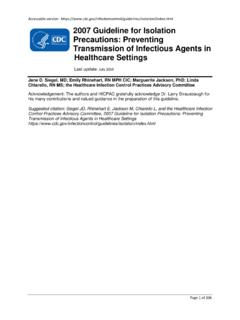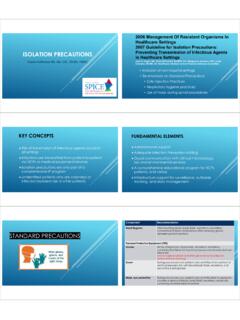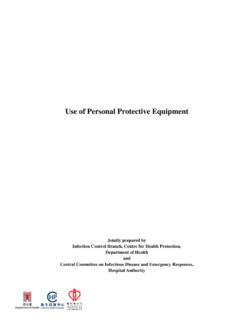Transcription of Infections and infectious diseases - World Health Organization
1 Infections andinfectious diseases A manual for nurses and midwives in the WHO European RegionWorld Health Organization Regional Office for Europe International Federation of Red Crossand Red Crescent Societiesef eg 2 2 2 2 2 2 E 2 2 2 2 D 2 2 2 2 2 2 2 2 2 2 2 2 2 2 2 2 2 2 2 2 2 2 IWRH F 2 2 2 2 2 2 2 2 2 2 2 D 2 2 2 2 2 2 2 2 2 2 2 2 2 2 2 F2s 2 2 2 2 2 2 2 2 2 2 2 2 2 2 2 2 ry2i D2 2 2 2i F2 2 2 2 F2i 2 2 2 2 X2 2 2 F2e2 2 2 2 D2 2 2 E 2 2 2 F2e2 2 2 2 2 2 2 2 2 2 2 2 2 Fe 2 2 2 2 2 2 2 2 2 ry2 2y 2 2i F2 2 2 2 2 2 2 D D2 2 2 2 2 2 2 2@ 2 2 2 2 2 2 2 2 ! 2 2 2 A2 2 2 # 2 2 2 2 2 F2p 2 2 2 2 2 ry2 D2 2 2 2 2 2 2 ry2 2y Fe 2 2 2 2 2 X2 2 2 2 2 2 2 2 2 2 2 2 2 F2 2 y 2 2 2 2 2 2 2 2 F2e 2 2 & 2 2 2 2 2 2 2 2 2 F 2 2r 2y 2 2 PHHI sxpig syx2gyx yvsxpig sy 2hs ie i i ix syx ie wix x sxq2ge iu Infections and infectious diseases are a great burden on many societies, including the countriesin the WHO European region.
2 To reduce that burden an integrated approach is required,combining Health promotion, disease prevention and patient treatment. The prerequisite forsuccess in this fight is the participation of all Health care professionals. Nurses and midwives,as major frontline providers of care, are in a position to contribute significantly to reducingthe and infectious diseases : A manual for nurses and midwives in the WHO Europeanregion has been written with the aim of developing the knowledge, skills and attitudes ofnurses and midwives regarding Infections and infectious diseases and their prevention andcontrol. It is intended for use as an interactive learning package for nurses and midwives inthe WHO European region, specifically in the more eastern part of the region.
3 Mastery ofthis material will enable nurses and midwives to respond to threats to the community, toteach their patients and members of the community effective ways of preventing infectionsand infectious diseases , to provide high quality and effective care to people with infectiousdiseases and to use appropriate measures to ensure safe manual comprises seven modules. Each module is in two parts: theory and practice,with opportunities for self-assessment through learning activities and a workbook. The manualshould be used as a package to ensure that, after training, nurses and midwives have a broadand up-to-date knowledge of Infections and infectious diseases . Each section of the manualcan also be used independently to develop knowledge in a specific area, and the manual as awhole can be used as a reference book in Health care manual is a joint initiative between the Red Cross and the WHO Regional Office forEurope.
4 It has been based on Communicable disease. Nursing course manual. Prepared fordistance education by the National Nursing Centre of China, 1992. Over the last two years,the Scottish Centre for Infection and Environmental Health has adapted the Chinese manualto make it relevant to nurses and midwives in Europe. The WHO Regional Office forEurope and the Red Cross wish to thank the staff at the Scottish Centre for their work, aswell as the many other people who have contributed to making the manual a reality, includingthe WHO collaborating centres for nursing and midwifery in the European Region andBarbara Stilwell, Scientist at WHO HeinasmakiInternational Federationof Red Cross and Red Crescent SocietiesAinna Fawcett-HenesyWHO Regional Office for EuropeForewordIntroductionHow to use this manualThis manual on Infections and infectious diseasesis intended for use as an interactive learningpackage, relevant for nurses and midwives withinthe European region, and specifically withinEastern Europe.
5 It is intended that each moduleshould consist of theory and also require practicefor develop existing knowledge skills and attitudesof nurses and midwives on Infections and infectiousdiseases and their prevention and control, withinthe European completion of this manual you should have anunderstanding of:1. the main concepts of prevention and control ofinfection;2. important Infections and infectious diseases inthe European region, including: definition; modes of transmission; epidemiological summary; manifestations; complications; risk factors / age groups affected; prognosis; diagnosis; methods of treatment; prevention of spread; screening; contact tracing; nursing care; rehabilitation; prevention strategies; and general information on less common infectionsand infectious diseases ; and3.
6 Practical measures that can be taken andimplemented into your own practice to preventthe spread of are seven modules:Module 1: The prevention and control of infectionModule 2: The Expanded Programme ofImmunization (EPI)Module 3: Infections spread by food and waterModule 4: Infections spread by animals and insectsand less common infectious diseasesModule 5: diseases spread by person-to-personcontactModule 6: TuberculosisModule 7: Infections spread by sexual contact andblood and body fluids; Part I: Infections spread bysexual contact and Part II: Infections spread byblood and body of each moduleEach module follows the same format and A front title An index that indicates which topics are coveredand where you can find A glossary of terms that explains what termsmean; you should refer to this throughout eachmodule.
7 Some words or terms may be found inmore than one A brief overall introduction to the Stated learning outcomes, indicating what youshould achieve on satisfactory completion at theend of each Key words, that is, words or terms of particularrelevance to an individual The main body of the text, containing theoryand factual content; the same paragraph headingsare used throughout the manual where Learning activities, to be carried out whenindicated in the text; a workbook is providedseparately for Revision points: these indicate that you shouldstop and note some points or answer a The summary of key points is a reiteration ofthe most important messages to absorb andremember from each Bibliography: although numerous sources ofinformation have been used in the production ofeach module, the authors have tried to use WHOsources whenever possible; only the main sourcesused for each module are included in Appendices, which are useful sources of versus practical learning compositionThe manual content contains most of the theoryrequired to provide a firm basis of knowledge oninfections and infectious disease.
8 The purpose ofthe revision points is to test your knowledge onmaterial already covered in the manual text. Try torespond to the revision points without referring tothe text in the first instance, then compare yourresponse to the information in the learning activities are intended to be morepractical and are related to nursing or midwiferypractice incorporating wider aspects relevant to themodule content. For example, you may be askedto visit a laboratory, carry out an audit in your placeof work or produce a leaflet to give to learning activities are designed to furtherdevelop your knowledge and are also practical anduseful. Depending on your area of practice, somelearning activities will be more useful than of learning activitiesIt is indicated within the text of each module whenyou should carry out a particular learning workbook containing instructions for thelearning activities is provided separately.
9 Theworkbook is designed to assist you to completethe activities, and there will be instructions. If thereis a blank space under an activity, this should beused for notes. On completion of the each module,you can compare your findings with informationin the completed workbook. This document isdesigned to help you find out if you are on theright track with the learning activities. It isrecommended that in order to get the most benefitfrom the manual, you should not refer to this untilyou have completed all the learning activities foreach informationThe manual is designed to be self-contained. Thenumber of other sources of information in thebibliography of each module has been kept to aminimum; those which have been cited areparticularly useful.
10 The information within thismanual is only as up-to-date as the date ofpublication; to obtain the most up-to-dateinformation available, visit the websites mentionedin the of revision pointsYou can test this yourself by comparing yourresponse to the information in the manual of contentsModule 1: The prevention and control of infectionModule 2: The Expanded Programme of Immunization (EPI)Module 3: Infections spread by food and waterModule 4: Infections spread by animals and insects and less common infectious diseasesModule 5: diseases spread by person-to-person contactModule 6: TuberculosisModule 7: Infections spread by sexual contact and blood and body fluidsPart I: Infections spread by sexual contactPart II: Infections spread by blood and body fluids1385392125155189231 List of diagramsModule 1 Diagram 1.
















